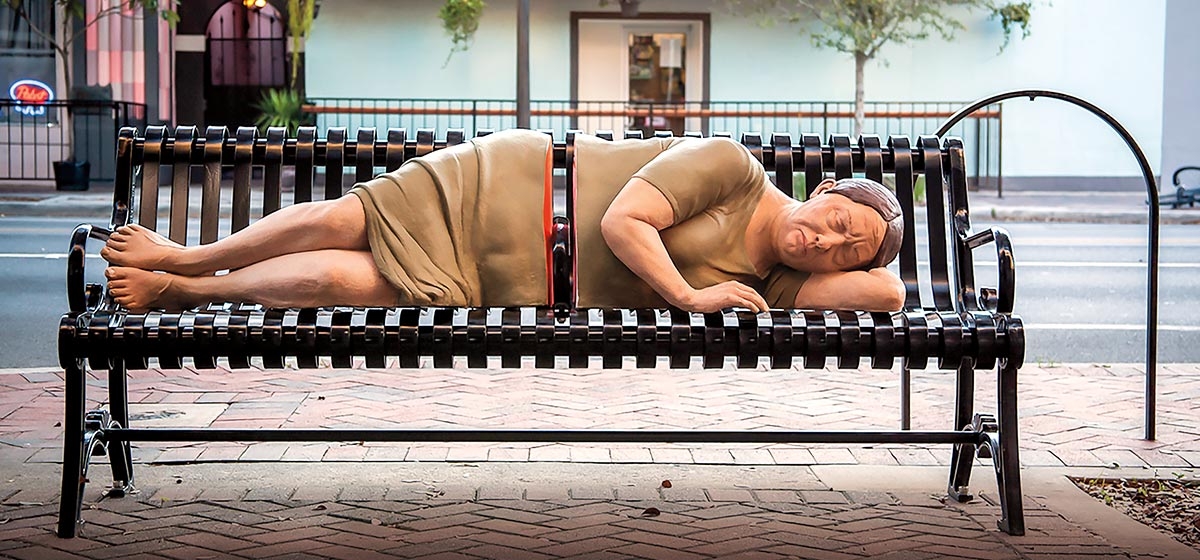
Given the unprecedented recent spate of destructive hurricanes, Contemporary Craft’s exploration of homelessness couldn’t be more timely.
[ngg src=”galleries” ids=”146″ display=”basic_thumbnail” thumbnail_crop=”0″]
Running through Feb. 17, “Shelter: Creating a Safe Home” is a cross-cultural exploration of the work of 14 artists on homelessness, refugees and relocation, gentrification, and individual sanctuary.
“We want people to be more aware of these issues that we’re struggling with as a society, and to kind of humanize them through individual stories,” said Janet McCall, director of the Strip District nonprofit. “What do we need as humans to feel safe? Those are the kinds of questions we want our visitors to consider. We’re kind of a special niche. You don’t often find a place like this in a bigger city.”
The free exhibit includes walk-in workshops, lectures and a variety of artistic perspectives. Katherine Clark, of San Francisco, has created a delicate, hand-embroidered drapery tracing the paths of Syrian migrations across the Aegean Sea. “What at first seems beautiful,” she says, “upon further investigation reveals a darker tale.”
Philadelphia native Demitra Thomloudis leads on-site workshops, while displaying her own pieces in the exhibit. Now an assistant professor in Jewelry and Metalwork at the University of Georgia, she uses physical materials of her former neighborhood, which was razed to make way for condos. Her jewelry pays tribute to those displaced and priced out of their homes, as well as the homes themselves. She says, “The jewelry becomes a portable vestige of place that can go out into the world and tell a story or start a conversation.”
Local artists include videographer Chris Ivey, who captures the feelings of abandonment of some former East Liberty high-rise residents. ROY, another local artist, has merged metal work with the actual handwritten words from purchased signs of the homeless. Seth Clark constructs a collage from the remnants of “challenged, destroyed, and forgotten” architecture.
“All of the artists here have an ability to give a narrative with objects that still have a lot of use,” says Thomloudis. “And people understand it—it’s real, and it speaks to them.”





